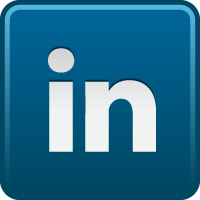The Global Development of ICT: A Quest for an Assessment on the Uncertainty Impacts on Country’s’ Development Challenge to Fight Against Corruption
Keywords:
Corruption, Corrupt Activities, Information Communication and Technology, Illicit, Transparency, Grand Corruption, Active CorruptionAbstract
As a new platform, the development of ICT has a huge link to society since it creates private communication or telecommunication, both offer and acceptance can be communicated via electronic means and provide a new route to corrupt behaviours. The vast number of associations has grown through a new trend of ICT networks. People take such advancements in technology as an opportunity to conduct unlawful activities. That ideology led the author of this article to assess whether the development of ICT facilitates a loophole for corrupt activities to nourish or not. Objectives: The fifth aspect will be articulated in this article to assess whether the development of ICT brings challenges to the fight against corruption. The first part provides an overview of ICT; the second highlights the conceptual framework of ICT, its development trends, forms, and characteristics; Thirdly part presents the understanding of corruption, its forms, and the criminalisation of corrupt acts; the fourth presents an assessment from the demonstration made in part two and three to explore whether the development of ICT brings new challenges to eliminate and control corrupt activities; and at the final to provide a new solution for improvements/ changes to fight against corruption. Findings: Even though the development of ICT brings challenges and opportunities in our daily lives, the findings indicate that the same development provides a new challenge to fight against corruption since there are loopholes for
unlawful activities to be conducted by public officials and individuals to make sure some process or procedures are hindered.Methodology: The qualitative and quantitative methodological approaches are based on analyzing and assessing secondary data collection by demonstrating an overview of Information technology, its development, and its characteristics, to explore whether it is creating a new challenge to fight against corrupt transactions or otherwise. These two methodological approaches contributed toward a better understanding of the usefulness and relevance of Information technology and initiatives to combat corruption; finally, the descriptive analysis took place to gather all relevant sources which assist in data presentation and findings.
References
See also the SADC Model Law on electronic Transaction and electronic commerce, 2013.
See also what is digital technology? Where are the benefits of using Digital. Available at www.digital.tidbit.com
Kaware, S. S., & Sain, S. (2015: 25). ICT application in education: an overview Sudhir. International Journal of Multidisciplinary Approach and Studies, 2(1).
The American National Standards Institute, available at www.ansi.org.
Happy S (2023). What is digital technology? Exploring types, evolution and a link. Available at www.tffn.net
Happy S (2023). What is digital technology? Exploring types, evolution and a link . Available at www.tffn.net
The World Summit for Social Development, 2003.
The United Nations Conference on Sustainable Development, Rio +20; Available at www.un.org
The International Telecommunication Unit (ITU) 2015; available at www.un.org
See also Nelson, R.R. (2019). Development as an Evolutionary Economic Process. In: Nissanke, M., Ocampo, J.A. (eds) The Palgrave Handbook of Development Economics. Palgrave Macmillan, Cham
Adam, I., & Fazekas, M. (2021). Are emerging technologies helping win the fight against corruption? A review of the state of the evidence. Information Economics and Policy, 57.
Baqir et al. (2018: 163). say that ICT shows a link to cultural evolution, indicated in the change of behaviour; a link on personal security, and criminal use.
Mariani, L., Trivellato, B., Martini, M. et al. (). Achieving Sustainable Development Goals Through Collaborative Innovation: Evidence from Four European Initiatives. J Bus Ethics
see also the Digital Trends in Africa (2021: 59).
The SADC Model Law on electronic Transaction and electronic commerce, 2013.
The World Summit for Social Development took place in Copenhagen, in 1995.
Similarly, Transparency International (TI) views corruption as one of the greatest challenges of the contemporary world since it undermines good governance, fundamentally distorts public policy, leads to the misallocation of funds, harms private sector development and particularly hurts the poor.
Avgerou, C. (2010: 2). Discourses on ICT and development. Information Technologies & International Development, 6 (3). Retrieved from http://www.itidjournal.org
See also Obukhova, Anna & Merzlyakova, Ekaterina & Ershova, Irina & Karakulina, Kristina. (2020). Introduction of digital technologies in the enterprise. E3S Web of Conferences. 159. 04004. 10.1051/e3sconf/202015904004.e also
Available at www.uneca.org
Aja, S. and Chukwu, J. N (2019). information Communication Technology and Development in Africa. Journal of Communication 5(1), Available at www.iaajournals.org
Aja and Chukwa (2019).
Zinia M (2024). What is the full form of ICT? Components and Characteristics. Available at www.naukri.com
Kabeyi M.J.B., and Olanrewaju O.A., (2023:685). Smart grid technologies and Application in the sustainable energy transaction: A Review. International Journal of Sustainable Energy, 42(1).
Available at Vocabulary.com. (n.d.). Interconnected. In Vocabulary.com Dictionary. Retrieved July 10, 2024, from https://www.vocabulary.com/dictionary/interconnected
See also Hare V., (2022). What Is Interoperability and Why Is It Important?
See also Ziani (2024).
See also Sameer P., (2021). Crafting Scalable System: Practice, Patterns, and Principles – Part 1. Available at www.medium.com
See also Nduhiu J., (2024). Scalability in IT: The Complete Guide to Scaling. Available at www.splunk.com/en
See also What is ICT in Cyber Security? Unlocking the Technical Side. available at www.cyberinsight.com
See also Annie B., (2024). Data Protection Strategy: Key Components and Best Practice. Available at www.ibm.com
Sameer P., (2021).
Zanin.
See also Tiwari, A.A., Gupta, S., Zamani, E.D. et al. An Overarching Conceptual Framework for ICT-enabled Responsive Governance. Inf Syst Front 26, 1161–1182 (2024).
See also Thakur K., et al (2023). An Overview of ICT Advancement. In: emerging technologies and Cybersecurity. Springer, Cham. Available at www.springer.com
See also Jafari N. et al (2023). The Role of new ICT-based systems in modern management. Special issue editors: Journal of Management and Organization.
See also What Is Business Technology? Available at www.sofigate.com. The publisher further adds that digitalization provides new business opportunities and requires companies to have a consistent digital frontline for interaction with customers, partners, and employees in a networked multichannel world.
See also Corbo A., (2022). What is IT (Information Technology)?
In similar to that, Corbo A., (2022). What Is It (Information Technology)? says that
See also Laguaite M (2023). 9 BEST Communication Technology Examples to Explore. Available at www.yoodli.ia
Gunnell M., (2023). Operational Technology. Available at www.techopedia.com Gunnell further insists that Operational Technology is focused on controlling physical devices and processes. It is about information and data, whereas OT is about actions and physical changes.
In similar to that, Dugal N., (2024). What is Artificial Intelligence and Why It Matters in 2024? Available at www.simplilear.com Dugal further states that Artificial intelligence (AI) is the simulation of human intelligence in machines that are programmed to think and act like humans. Learning, reasoning, problem-solving, perception, and language comprehension are all examples of cognitive abilities.
See also Singh A., (2022). What is Artificial Intelligence? How Does AI Work? (AI Types, History, and Future)
Blockchain is the technology that digital currency, cryptocurrency and bitcoin are built on. More specifically, it's the underlying technology that constructs a decentralized digital ledger that enables exchanges between multiple parties in a secure, immutable manner
See also Campbel C (2024). What are the 4 different types of blockchain technology? Available at www.techtarget.com
Campbell (2024).
See also Bauhr and Grimes (2017: ).
Saphy L.B., (2024:1). Corruption in Africa: Initiatives, Challenges, and the Road Map to Success. (accepted for publication at ………)
The World Bank opinion of 2023 insists that worldwide, corruption is perceived as a cross-cutting problem that constrains the development efforts of many countries.
See also Adam, I., & Fazekas, M. (2021). Are emerging technologies helping win the fight against corruption? A review of the state of the evidence. Information Economics and Policy, 57, 100950.
See also Elbahnasawy N.G., (2014). E-Government, Internet Adoption, and Corruption: An Empirical Investigation World Dev., 57 (2014), pp. 114-126
Rose-Ackerman, (1978); See also the fact sheet of the World Bank (2020). available at www.worldbank.org
Saphy (2024: 5).
Joe Biden (the President of the United States of America, 2024) also says that corruption is cancer: cancer that eats away at a citizen's faith in democracy, diminishes the instinct for innovation and creativity; already tight national budgets, crowding out important national investments. It wastes the talent of entire generations. It scares away investments and jobs.
Mbao (2011:225). Prevention And Combating of Corruption in Zambia.
Johnston (1986:467). The Political Consequences of Corruption: A Reassessment.
Chêne M (2014). The Impact of Corruption on Growth and Inequality
Mauro (1995), further says that it is also likely to discourage investment and create economic inefficiencies and contribute to income inequality.
Art. 2 of the EU Conventions on the Fight against Corruption of 1997.
Transparency Index of 2007.
Elaine Moral and Legal Development of Corruption: Nineteenth and Twentieth Century Corruption in Ireland (2007:49). Elaine further argues that this kind of corruption takes place at the policy formulation end of politics. Corruption refers not so much to the amount of money involved as to the level at which it takes place. Grand corruption is at the top levels of the public sphere, where
policies and rules are formulated in the first place.
Rose-Ackerman Democracy and Grand Corruption (2000:323). In similar to that Palmer (2012:31). Combating Grand Corruption in Africa: Should it be an International Crime? states that grand corruption is used in two senses: it refers either to specific acts of corruption involving particularly large amounts of money, usually at senior levels of government, or to corrupt practices that result
in the abuse of systems designed to ensure good and effective governance. Palmer further state that the sustained abuse of such systems can result in the entrenchment of the corrupt practices as part of the systems, at which point these practices are referred to as 'systemic corruption.
Doig and Theobold (eds) (2000:9). Corruption and Democratization.
See also Doig and Theobold (2000:7); Similar to that Palmer (2012:4) states that petty corruption means either specific acts of the abuse of power by public officials for some small bribes or relatively minor benefits or more serious corruption at managerial level.
Lodge (1999: 61).
Transparent Index (2000).
Blundo and Olivier de Sardan (2006:218). The Popular Semiology of Corruption.
Art. 4 of the African Union Convention against Corruption (2001).
Art. 3 of the Southern African Developing Countries Protocol against Corruption (2000).
Art. 6 of the Economic Community of West African States Protocol on the Fight against Corruption (2001).
Art. 15 of the United Nations Convention against Corruption (1977).
Similarly to that, Ciarli T., et al (2021). Digital technologies, innovation, and skills: Emerging trajectories and challenges. Available at www.researchget.net. Ciarli et al state that digital technologies permeate and restructure all facets of economic and social activities. In some ways, they are implemented, they disrupt existing activities, while in others they have a more incremental link and complement existing activities. In some cases, they substitute for existing technologies and tasks, but in others they are complementary. At times, they result in the creation of new activities, services, innovation, and business opportunities.
Charoensukmongkol P. and Moqbel M. (2014). Does investment in ICT curb or create more corruption? A cross-country analysis?
See also Digital trends in Africa (2021: 49).
Kshetri, N., (2017). Will Blockchain emerge as a tool to break the poverty chain in the global south?
Kshetri (2017) says that the development of ICT can provide a chance for the system to hinder the information for those seeking details about relevant officials to bribe, the number of bribes, and the process of bribe paying. Kshetri further says that opportunity makes bribery markets operate more efficiently, with uncertain effects to facilitate irregularities.
See also Paal B.P., (2022). Artificial Intelligence as a Challenge for Data Protection Law: And vice versa. In: Voeneky S, Kellmeyer P, Mueller O, Burgard W, eds. The Cambridge Handbook of Responsible Artificial Intelligence: Interdisciplinary Perspectives. Cambridge Law Handbooks. Cambridge University Press. Similarly, Paal says that it also poses a challenge to data security and regulation, and could even enable the transfer of corrupt funds.
See also Bac M (2001:89). Corruption, connections and transparency: does a better screen imply a better scene? Public Choice, 107.
Kossow N. and Dykes V., (2018). Embracing Digitalization: How to ICT to Strengthen AntiCorruption.
Bac (2001: ).
Similarly, Bagozzi et al., say that transparency portals are online platforms usually run by governments or NGOs that publish information on government operations. They include open data portals where government datasets are compiled and freedom of information portals which facilitate citizens’ information requests. Having an access with the government platforms also facilitate challenges in fighting against corrupt happenings. Some information will go viral only just there is one or group of people with unlawful manner.
See also Savelo, I. (2005). The rule of law: principles, issues and challenges. In Rule of Law, Legitimate Governance & Development in the Pacific (pp. 1–35). ANU Press. Available at http://www.jstor.org
See also Seifallah S., and Mohamed Sami Ben Ali. M., (2017). Corruption in Africa: What role does ICT diffusion play, Telecommunications Policy, Volume 41, Issues 7–8. available at www.sciencedirect.com/science/article








